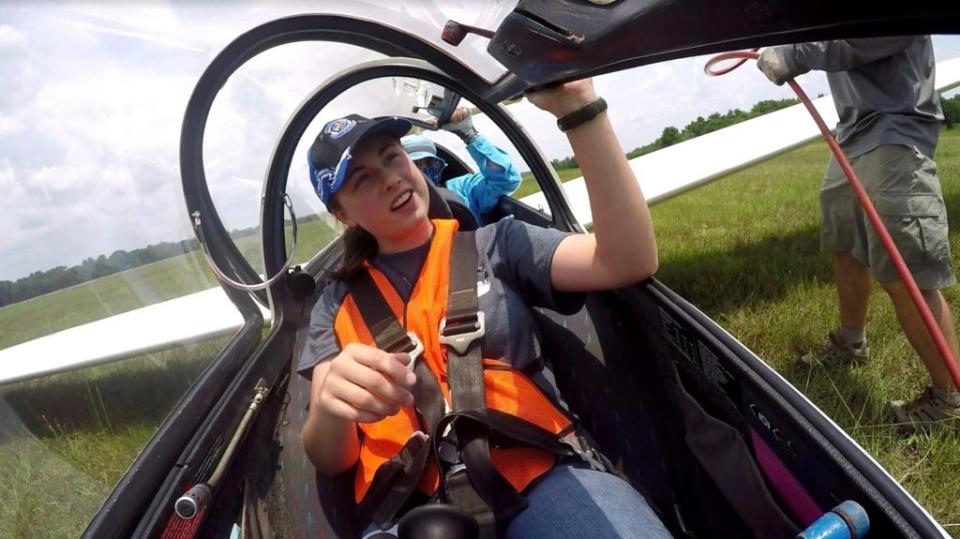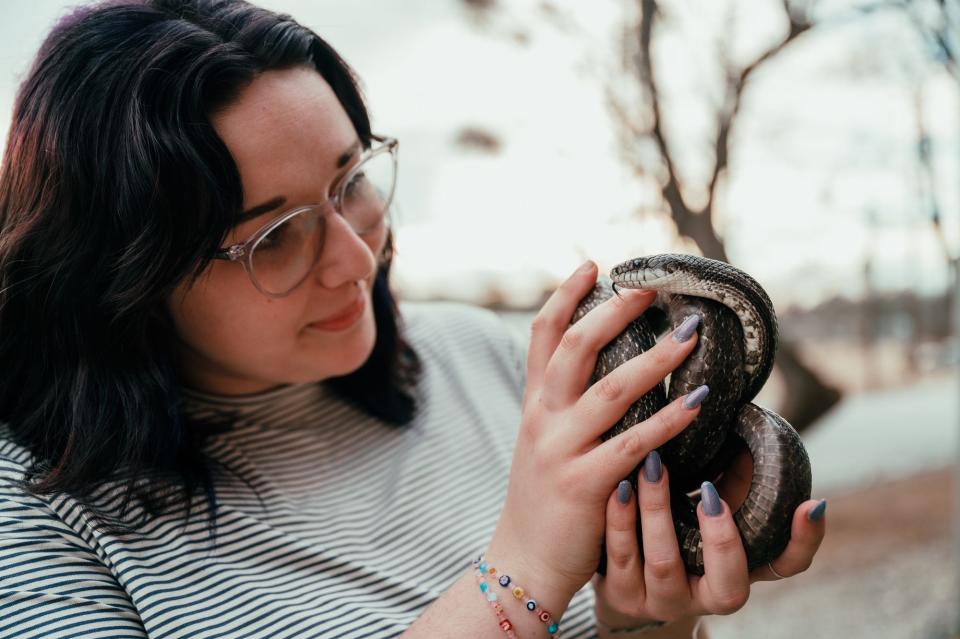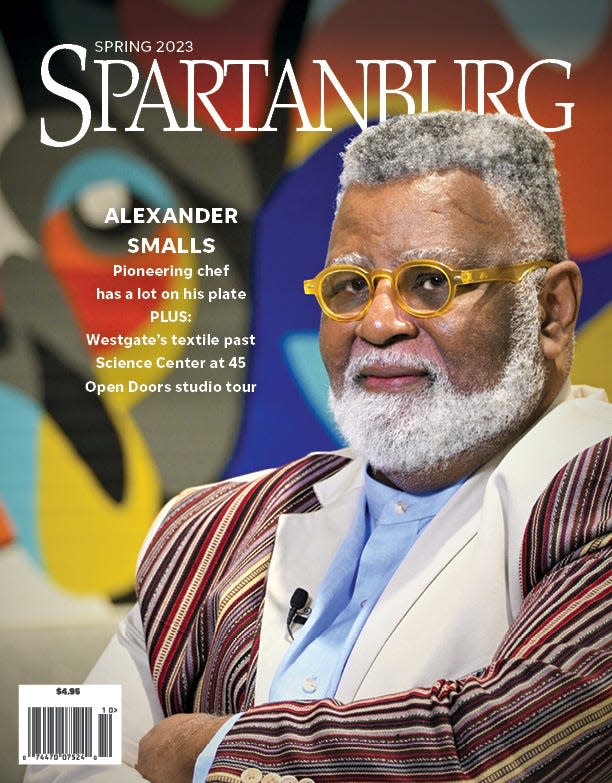Snakes to aviation: Spartanburg Science Center offers unique STEM experiences
It’s a lot in just three rooms.
Go to the end of the second-floor hallway of the Montgomery building at the Chapman Cultural Center and there it is – the John F. Green Spartanburg Science Center.
If you’re 5 to 65, pay your $5 and step through the doors into a jam-packed experience for anyone who loves any kind of science.
Look left and you’ll see Teak the Tegu in his two-level lizard lair, just outside the animal room, home of snakes and turtles, bearded dragons and other critters.
Look right and it’s the fossil room, with its artifacts and skeletons, a natural history museum in miniature, complete with an elephant skull that stretches more than 9 feet across.
Go straight and try out interactive displays on electric power, physics and robotics.
It’s a lot more than just three rooms.
Science Center instructors lead more than 500 educational programs that serve more than 20,000 students at schools in Spartanburg County and Cherokee County, most of them from after-school Kids Clubs (formerly known as Boys and Girls Clubs) at 18 schools.

Over at the Spartanburg Downtown Airport, high-school-age students are learning about all aspects of aviation, hands-on and even in-flight.
And in a combination classroom and virtual studio, podcasts and video lessons are being recorded, followed by eager 4- to 6-year-olds doing interactive activities and experiments.
When there’s an activity in each space, it’s a beautiful thing, says Science Center Executive director Mary Levens. Beautiful, even as it’s sometimes a bit raucous.
“Learning is loud,” says Levens, who joined the Science Center after a 43-year teaching career. “You've got to be in touch with what the kids are doing, and they have to not be afraid to ask a question.”
Mr. Green's legacy and Spartanburg Science Center
The Science Center is celebrating its 45th year in 2023.
Its origin can be traced directly to John F. Green, the founder and longtime executive director of the science center, from its founding in 1978 until his retirement in 2016.
For decades of Spartanburg students, the identity of the Science Center was almost indistinguishable from Green’s.
He would visit students at school, bringing snakes and lizards and other items from the Science Center’s collections. Students were delighted and learned and made long-lasting memories.
But when they got home, the conversation was often more about the experience than what the organization provided it.
Same thing with many years of science-themed summer camps, which were often more associated with Green than the organization he created.
“A lot of parents say they didn’t know Spartanburg had a science center, but we’ve been here for more than 40 years,” Levens says. “The kids knew because John went into the schools. But the parents didn’t. ‘Mr. Green came today’ doesn’t say ‘Spartanburg has a Science Center.’”
Levens and her small staff are working hard to raise visibility for the Science Center as an organization.
Wofford students took classes among the animals with 'snakes around their necks'
Levens hires temporary instructors, usually teachers, for many of the center’s 22 half-day, week-long summer camps and to provide Kids Club educational programs
Paid staff is two retirees who work part-time and one other employee, along with Wofford Bonner scholars majoring in physics, biology and environmental sciences.
The scholars volunteer 10 hours a week as part of the Bonner program, but most work additional hours, for which they are paid.

Bonner scholar Mae Webster’s first volunteer posting as a first-year student was at an office, where her duties involved little more than filing, Levens said.
“She came to me and said, ‘would you take me if Bonner will let me switch?’ I said ‘certainly!’ Bonner let her switch and she’s been with me ever since. Now, she totally runs the animal room.”
Webster is a senior this year and will graduate out of the Bonner program.
“I’m going to try to hire her,” Levens said.
Levens says having so many young, smart people around keeps her on her toes. “They want to go and try things; they want to rearrange things. I’ll tell them, ‘Go try it.’”
During the height of the pandemic, Wofford students were mostly stuck in their dorm rooms, attending remote classes on their computers.
Levens said that the Bonner Scholars asked if they could come to the center and take their classes among the animals -- socially distanced and spread out across the otherwise-closed center. It was beneficial for both students and animals.
“We’d noticed that some of the animals were acting funny. It was because they were used to being handled, they were used to the noise and it was deathly quiet. So I had college students, one in there, one over there and they’d have snakes around their shoulders,” Levens said. “I’m sure some professors got interesting views when they clicked on and a student was in class with a snake around their neck.”
During COVID pandemic, Spartanburg Science Center expanded footprint
Levens said that like many organizations, the lack of revenue from visitors and canceled in-school programs during the pandemic made things “a little dicey.”
And while the other organizations in the Chapman Cultural Center could close their doors and work from home, “we couldn’t shut down. We’ve got 40 animals that needed to be fed,” she said.
Instead of hunkering down, hoping to survive, the Science Center expanded its footprint and pivoted its programming to pandemic-friendly activities.
The center put on socially distanced outdoor movies in Barnet Park and teamed with Spartanburg Area Conservancy on a scavenger hunt for items found outside. Packets were picked up and dropped off, drive-through style, with gloved and masked volunteers tossing them into cars.
One particularly poignant pandemic activity was distributing bags with disposable cameras – each with 27 frames of film inside – for children, ages 3-12, to document Spartanburg during Covid.
Levens said her staff initially prepared 175 bags but ended up distributing more than 320.
From the Herald-Journal Archives: Spartanburg childrens' pandemic photography in exhibit
“It was a whole new experience for the kids – the disposable cameras. The biggest comment (from adults) was ‘I didn’t know they still made these things.’ The kids were ‘I took a picture, where is it? I want to look at it.’”
But they got the hang of it and more than 270 of the cameras were returned. The film was developed and digitized by Spartanburg Photo, with backing by sponsors like the Spartanburg County Foundation and USC-Upstate.
"We assembled a team of professional photographers who went through and selected 33 that they thought were really good,” Levens said.
The curated photos were enlarged, mounted put on display outside the center, turning a hallway into an impromptu gallery.
New spaces, new programs
Expansion of the center’s footprint at the Chapman Center included absorbing an under-used conference room next door. The renamed Milliken Learning Space offers additional room for meetings, classes, and camps. A grant from the company covers the additional rent.
At one end of the room, a one-eighth scale sculpture of a North Atlantic Right Whale is suspended from the ceiling. A shelf displays a model of a Saturn V rocket, made of Legos. It’s an homage to Milliken, which produces the color pigments that are used in Lego bricks,
A room at the opposite end of the building became the CONTEC Media Center last spring.
Levens pitched the idea to CONTEC Inc. CEO Jack McBride, who agreed to underwrite it. AFL in Duncan, a frequent science center partner, provided some of the equipment for the room, which serves as a studio for podcasting and recording video as well as being additional space for programs like a “Step into STEM” program for 4, 5 and 6-year-olds, which was developed by Webster as her Bonner program senior project.
“We feel like we’ve got a lot more space for outreach now,” Levens said.
‘Feel the learning’
Levens said that the spring and summer will bring plenty of activity, with the return of the First Lego League Jr. Robotics Expo and competition for teams of children ages 6-10 on March 18.
And this summer, the center will offer more than 20 weeklong, half-day camps.
Levens says that the camps are great fun for kids, ages 4-12 – and a bargain for families. The $150 cost for 15 hours of STEM-related is “cheaper than a babysitter and way cheaper than a tutor.” Scholarships are also available to help with the cost.

“It’s kind of crazy here in the summer when we have so many kids in here doing things, but you can just feel the learning and the energy that’s taking place.”
This story appears in the Spring 2023 issue of Spartanburg Magazine, published quarterly for subscribers of the Herald-Journal
This article originally appeared on Herald-Journal: Spartanburg Science Center celebrating 45th anniversary in 2023

